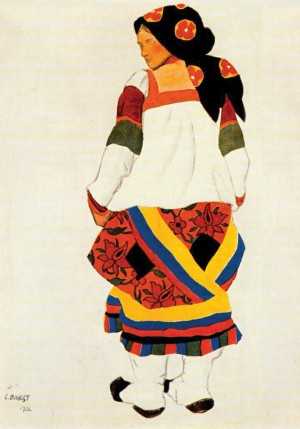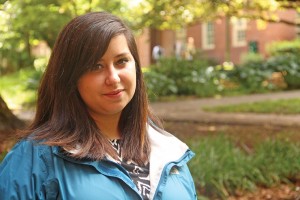 Humanities
Humanities
The Good Russian Daughter, The American Girl
 There were times, growing up, when Marilyn Pikovsky felt trapped between two worlds.
There were times, growing up, when Marilyn Pikovsky felt trapped between two worlds.
Her parents, who emigrated from Ukraine to rural Oregon, wanted a good Russian daughter: reserved, fluent in Russian, successful in her career but also competent in cooking and cleaning. Ready-made for marriage and a family.
But she was in America—the values were different. Teens were independent, if not downright rebellious: they experimented with smoking and drinking, and their desire to “question authority” often put them at odds with their parents.
Years passed, but Pikovsky eventually found people like herself when she enrolled at the University of Oregon, where she connected with the small-but-active Russian student population. Like her, these fellow students had parents who had immigrated to the United States, but who still identified as Russian or Soviet.
Pikovsky quickly realized that there were, in fact, tens of thousands of young Russian Americans across the country making their own way, making their own culture, between the two worlds. She vowed to learn all she could, and now it’s paying dividends.
As a senior in the Clark Honors College, Pikovsky has launched a study of Russian immigrants that will be the basis for her honors thesis and also satisfy her personal interest in heritage.
There are more than three million Russian Americans, many of whom differentiate themselves based on their religion. There are five prominent Russian religious groups in the US and, conveniently for Pikovsky, all of them are represented in Oregon.
Using these groups as her subjects, Pikovsky—majoring in Russian, international studies, and history—is examining Russian culture in America. She wants to know which values from the homeland are retained, which are abandoned, which groups adjust more easily to their new surroundings, and why. Currently deep in fact-finding for a project that she’ll complete this winter, Pikovsky suspects that even though Russians have been arriving in America in large numbers since the late 18th century, most of them still identify, first and foremost, as Russian or Soviet.
 Equally important to Pikovsky (left) is how American culture affects her Russian American peers in areas such as language. For example, the sons and daughters of Russian immigrants develop a hybrid tongue through which, she said, they “Russian-ize” certain English words to make them more understandable to mothers and fathers—“Safe-uh-vay” or “Val-mart,” for example, if it’s time to go shopping.
Equally important to Pikovsky (left) is how American culture affects her Russian American peers in areas such as language. For example, the sons and daughters of Russian immigrants develop a hybrid tongue through which, she said, they “Russian-ize” certain English words to make them more understandable to mothers and fathers—“Safe-uh-vay” or “Val-mart,” for example, if it’s time to go shopping.
Some of these teens appear to struggle with what Pikovsky calls “double lives.” They’re having trouble at school or with the law, portraying themselves as virtuous to their parents while secretly they’re wrestling with the draw of drugs or gangs.
The young researcher has also discovered a healthier outlet for teen angst specific to Russian Americans: humor.
Garik Suharik, a young Russian American in New York City, has become an Internet sensation with five- and 10-second videos in which he pokes fun at Russian customs and expressions passed down from his elders. His Facebook page—Brooklyn Russian Vines—is followed by more than 24,000 people. Pikovsky sees in Suharik’s clever cultural send-ups, and the reactions they get, fertile ground for her project.
Her long-range goal is law school—specifically, immigration law. Pikovsky has seen firsthand the challenge that Russian immigrants face in trying to reconcile the laws and culture of their former country with those of the one they’re in now. She’d like to make that transition smoother for others, and she’s using her project to better understand the issues.
“I’m hoping to bridge the gap (between US and Russian cultures),” Pikovsky said. “I want to explain how we can go about adapting to both.”
—By Matt Cooper


 Twitter
Twitter Facebook
Facebook Forward
Forward